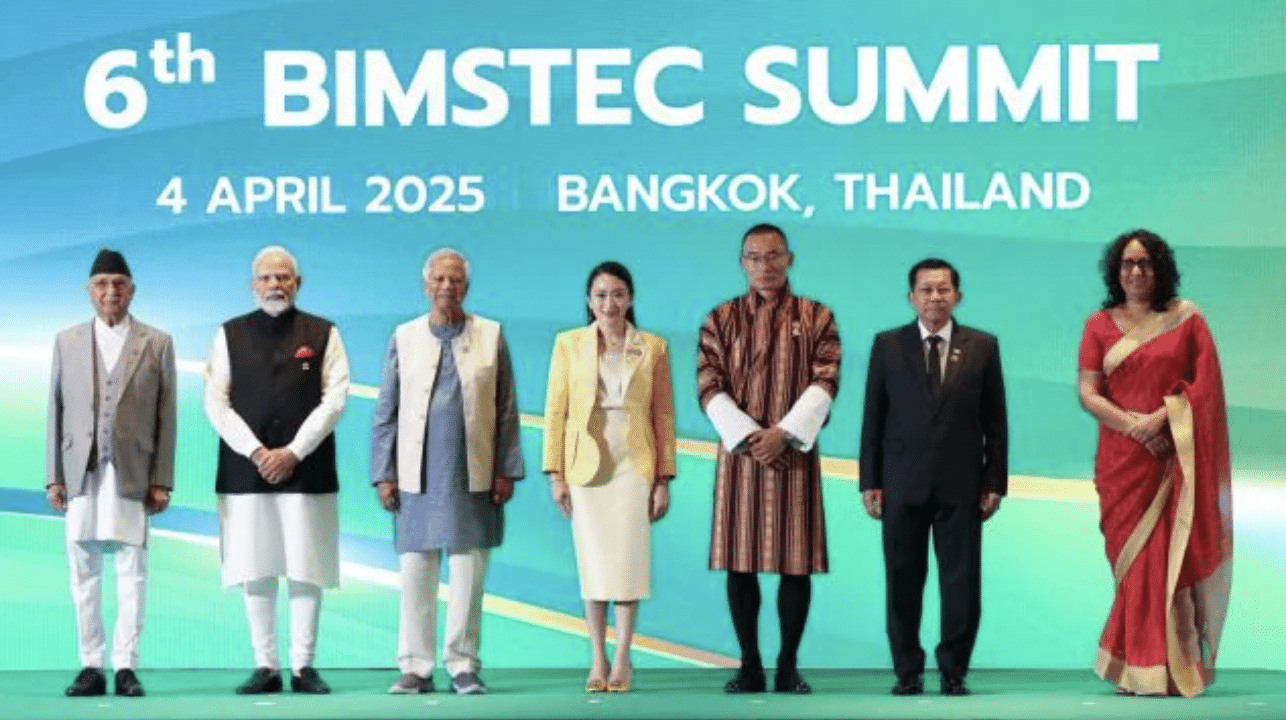
|
Getting your Trinity Audio player ready...
|
(The article was originally published in Indian Express on April 05, 2025 as a part of Dr Madhav’s column titled ‘Ram Rajya’. Views expressed are personal.)
All geopolitics is regional. The growing redundancy of the United Nations and its affiliates is convincing countries that the future is going to be not globalism but regionalism and minilateralism. Even in the last century, despite tall claims, the real geopolitics revolved around groups and regions.
The first genuine effort at building globalism was attempted by American president Woodrow Wilson in January 1918 with a 14-point agenda, telling Congress that the mission of the US would be “to vindicate the principle of peace and justice in the life of the post-War world”. The League of Nations was formed. But the enthusiasm did not last long. Wilson’s successor, Warren Harding, rejected the idea and walked America back into isolationism. The League died a silent death soon after.
Efforts at creating global governance resurfaced when Winston Churchill and Franklin D Roosevelt together came out with the Atlantic Charter in August 1941. It contained principles such as self-determination, economic cooperation, and disarmament of aggressor nations, which paved the way at the end of World War II for the formation of multilateral bodies for global governance, including the UN.
The world lived under the illusion of global multilateral governance during the later decades of the last century. But the 21st century brought the realisation that globalism was just a fad. Even while championing that lofty cause, big powers had silently busied themselves with creating blocs and alliances. If the Soviets used tank power to spread their influence into Eastern Europe and create the Warsaw Pact, the Americans used economic power through the Marshall Plan to spread their tentacles into war-torn Western Europe and build NATO. China under Mao Zedong decided to quietly up the ante by using its superior military might to create a geopolitical sphere of influence. The Korean and Vietnam wars provided the perfect opportunity for it.
India’s tragedy from the time of its independence was the romantic approach to global politics. Although Jawaharlal Nehru initially demonstrated some realism by hosting a 28-country Asian Relations Conference in March 1947, he was carried away by notions of Non-Alignment and Third World politics.
Fortunately, the last century became the burial ground of globalist dream projects. If the pre-globalist era of colonisation was driven by military and economic power, the post-globalist era would be driven by regional interests. The first to realise this were the Europeans. In March 1957, six European nations — Belgium, France, Italy, Luxembourg, the Netherlands and West Germany — came together to form the European Economic Community. Decades later, in 1993, it became the European Union. In our neighbourhood, leaders of five Asian countries — Indonesia, Philippines, Malaysia, Singapore and Thailand — came together in August 1967 to form the Association of Southeast Asian Nations (ASEAN), which has now grown into an 11-nation body.
As globalism recedes, these regional groupings are bound to emerge as new power blocs. That will be the much-talked-about multipolar world order of this century.
South Asia remains the least integrated despite being the most contiguous geographically and culturally. Half-hearted efforts have been made to build regional alliances. When Ziaur Rahman of Bangladesh took the lead in convincing the leaders of Nepal, Sri Lanka, Bhutan and Maldives to form a regional association, India and Pakistan were left with no option but to join it. The South Asian Association for Regional Cooperation (SAARC) was formed in December 1985. Bangladesh, India, Sri Lanka and Thailand got together in 1997 to enhance economic cooperation, and created a group called BIST-EC. When more countries like Nepal, Bhutan and Myanmar joined it, the name was changed in 2004 to the Bay of Bengal Initiative for Multi-Sectoral Technical and Economic Cooperation (BIMSTEC). Meanwhile, Nelson Mandela, during his visit to India in 1995, proposed the formation of the Indian Ocean Rim Association (IORA), which took shape in 1997. The sad reality is that none of these bodies has taken off the way other regional and minilateral alliances have elsewhere. India must accept part of the blame for its insufficient interest in regional integration.
Prime Minister Narendra Modi is trying to reinject vigour into regional geopolitics. While terms like “Global South” sound grandiose, the ideas that Modi is championing — like his emphasis on the identity and importance of the Indian Ocean Region (IOR) during his recently concluded Mauritius visit, or his efforts at creating a distinct Indian Ocean agenda in the Quad’s Indo-Pacific discourse by insisting on inclusivity and ASEAN centrality — will go a long way toward developing greater regional bonhomie and integration. Modi made commendable efforts at reviving SAARC by inviting leaders to his swearing-in in 2014. Sadly, it remains dysfunctional. But BIMSTEC appears to have greater growth potential. Regrettably, it has remained an underdog until now due to lack of political interest. In its 28-year existence, its leaders have met only six times, once virtually. It grapples with challenges like a lack of resources and manpower, and most importantly, a name that doesn’t inspire. In this scenario, Modi’s participation in the BIMSTEC summit in Bangkok raises optimism.
Greater integration of the IOR through minilaterals like BIMSTEC, the Western Indian Ocean initiative involving Mauritius and other island countries, and India-East Africa cooperation, must be a priority for the Indian leadership. No regional alliance in the world is trouble-free. But it is the vision and determination of leaders that makes them work. Modi has the vision, and the region has several statesmen leaders who can join hands. It is time for a new era of regional integration to rise in the IOR.




